- Qualcomm Launches Snapdragon 4 Gen 2 Mobile Platform
- AMD Launches Ryzen PRO 7000 Series Mobile & Desktop Platform
- Intel Launches Sleek Single-Slot Arc Pro A60 Workstation Graphics Card
- NVIDIA Announces Latest Ada Lovelace Additions: GeForce RTX 4060 Ti & RTX 4060
- Maxon Redshift With AMD Radeon GPU Rendering Support Now Available
Gigabyte GA-P35C-DS3R
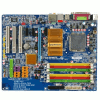
Gigabyte, like others, released a slew of motherboards utilizing Intel’s P35 chipset when it was first announced. The P35C-DS3R is unique to their line-up though, since it will accept both DDR2 and DDR3 memory. We pit the boards performance using both types of memory against our recently reviewed ASUS P5K and P5K3.
Page 6 – Multi-Media Tests, Disk Access
Nothing can prove the performance of a PC better than real-world benchmarks. The only downside to real-world tests is that it’s difficult to compare to a friends computer, unless they happen to have the same software and media files that you are encoding/converting. We can show direct differences though, since we run the exact same tests on each board.
To test video encoding capabilities, we ripped our “Lamb of God – Killadelphia” concert DVD and then used Nero Recode to convert it into something that can be burned on a normal sized DVD. The direct DVD rip is 7.7GB, and Recode compresses it into a 4.5GB frame.
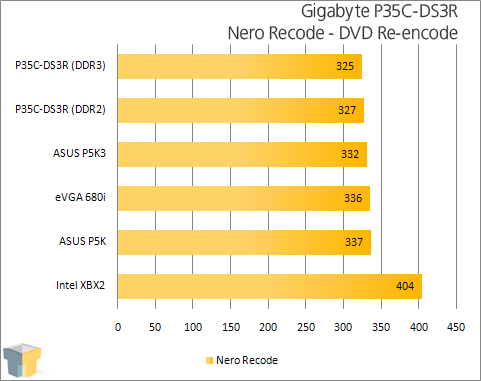
As humorous as it is to see the Intel XBX2 land in last place, despite being first in our SYSmark tests, the most important thing to take away is knowing that the P35C-DSR3 placed first, with both configurations.
Similar to our video encoding test, we originally ripped a solid FLAC file from our “Tiesto – Elements of Life” album. From there, we decompressed it using flac -d and then compressed it into a 320Kbits MP3 using lame -b 320. LAME 3.97b2 was used for testing.
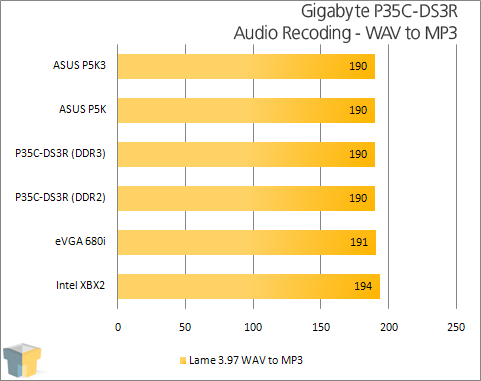
Audio conversion, as we can see, may depend on a motherboard, but moreover it will depend on the actual frequencies used. Both of our P35C-DS3R and P5K DDR2 and DDR3 configurations posted the exact same times.
As mentioned earlier, I have performed numerous tests using 3DS Max 9 on multiple motherboards, to find that the end performance results hardly differed at all. My tests consisted of a 3200×2400 render, in addition to an export of 100 frames at 640×480. With both tests, the results were either exact or one second different.
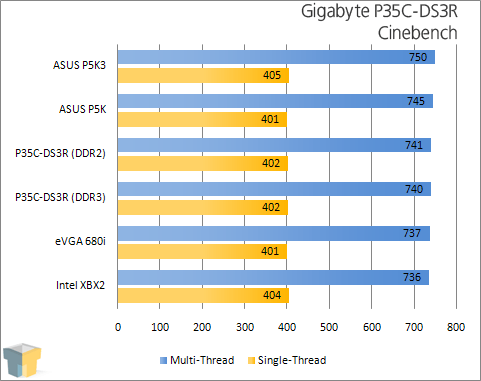
Both the ASUS P5K and P5K3 had obvious benefits here, while the P35C fell a wee bit behind.
Different motherboards use different chipsets for SATA controllers, so these tests are a good way to see how one board will compare to another. The first test is synthetic, using HD Tach RW/3, while the File Compression is real world, which involves compressing a 4GB folder (4,809 files) using 7-Zip.
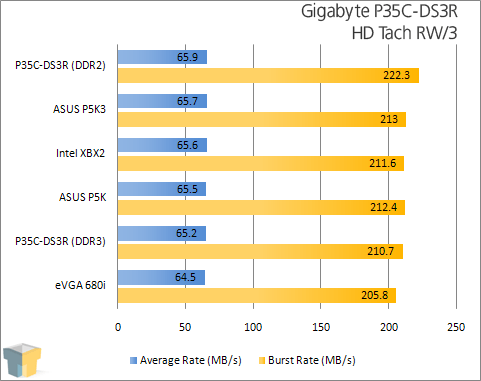
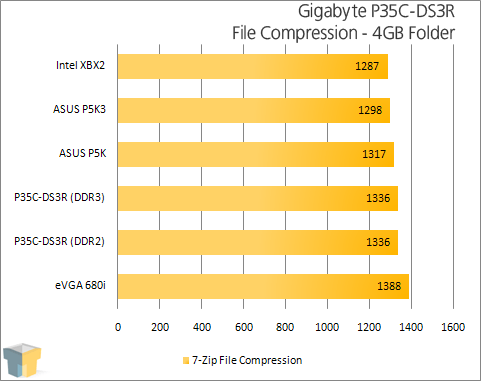
Intel’s XBX2 excels at very specific tasks, archiving being one of them. Behind it lies the P5K boards followed by our Gigabyte.
|
|
Support our efforts! With ad revenue at an all-time low for written websites, we're relying more than ever on reader support to help us continue putting so much effort into this type of content. You can support us by becoming a Patron, or by using our Amazon shopping affiliate links listed through our articles. Thanks for your support!





